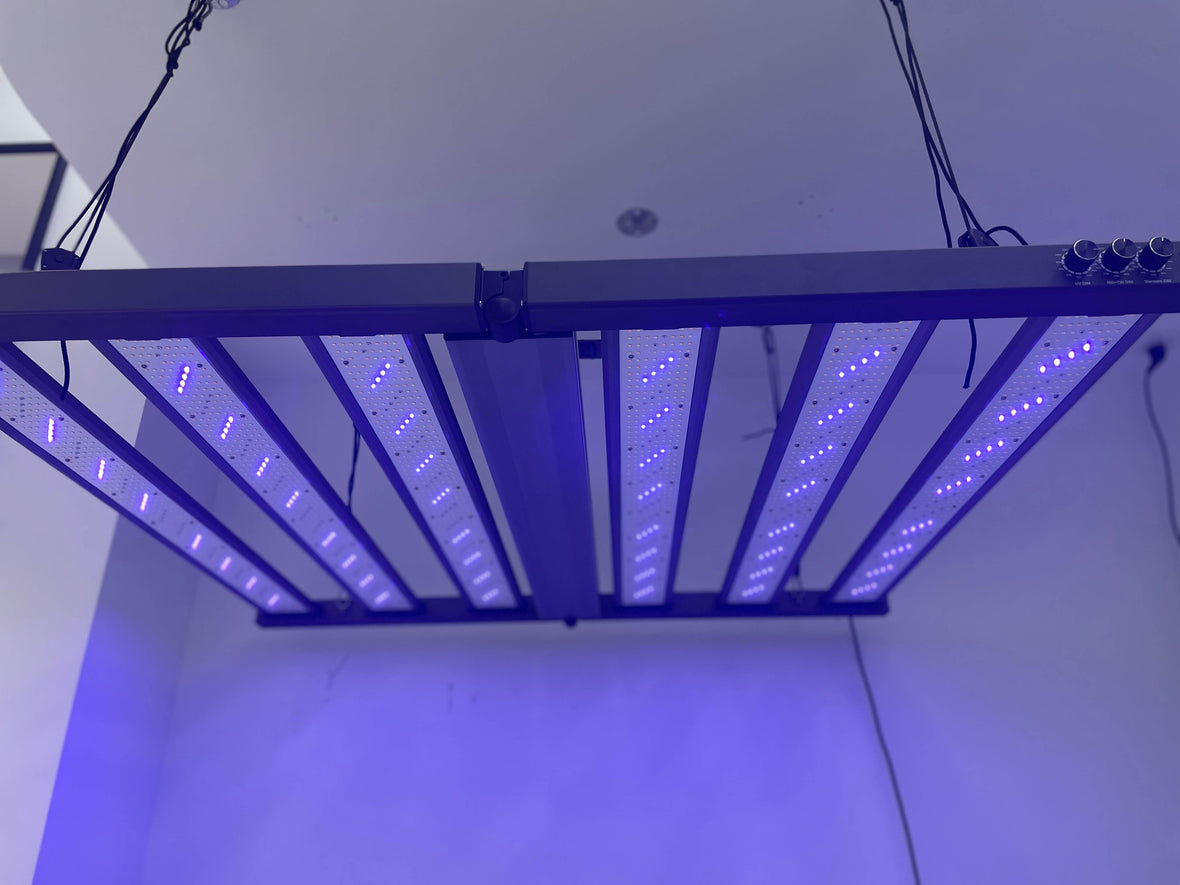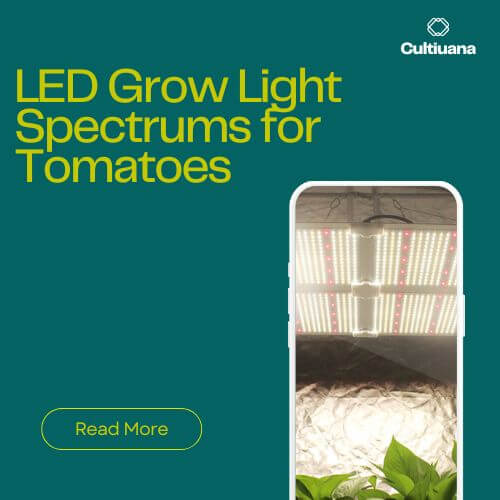
Do LED Grow Lights Emit UV
Figuring out do LED grow lights emit UV is easy, and the answer is NO.
LED grow lights emit UV only when they have UV diodes incorporated.
Most standard LED grow lights prioritize the wavelengths necessary for photosynthesis, such as blue and red light, which are essential for plant growth.
However, some manufacturers may include UV diodes in their LED grow lights to provide a supplemental UV component.
It's important to note that the UV output of LED grow lights is typically significantly lower compared to specialized UV lights.
The purpose of incorporating UV in LED grow lights is often to mimic certain aspects of natural sunlight and provide a more comprehensive light spectrum for plant development.
The UV component in LED grow lights is carefully balanced to avoid causing harm to plants or individuals.

In this article, you will learn these as below:
How much UV do LED grow lights emit?
standard LED grow lights have a relatively low UV output compared to specialized UV lights.
The primary focus of LED grow lights is to provide the specific wavelengths of light required for plant growth and photosynthesis, such as blue and red light.
LED grow lights that include UV diodes for supplemental UV output typically emit a small amount of UV light.
We can quantify the amount of UV light emitted by LEDs using two parameters: electrical power and optical power.
Both of these units are measured in watts or milliwatts. Since the optical power is generally low, most of the time we use milliwatts (mW).
For example, if an LED light has a UV power of 50 watts, the 50W refers to the electrical power.
When converted to optical power, it would be approximately 5000 to 10000 milliwatts (mW). However, the exact milliwatt value may vary slightly depending on the specific LED.
There is a photonic conversion efficiency involved here, which is related to the manufacturing process of the LED itself and the semiconductor materials it uses.
Generally speaking, around 10% to 20% of the electrical power can be converted into optical power.

Is LED light UVA or UVB?
When an LED light includes UV diodes, it typically uses UVA diodes, which means that the light it produces is UVA.
The reason for this is that UVA light is less likely to cause harm to plants, individuals, or sensitive materials.
UVB and UVC diodes are quite expensive and can be damaging to the components and parts of LED lights.
So, if someone were to use UVB or UVC diodes, they would need to use very durable light components to minimize the harm caused by UVB or UVC.
That's why, in general, most LED lights opt for UVA diodes because they are more cost-effective and safer for the overall performance of the light.
Is UV Light Necessary for Plant Growth?
This question doesn't have a definitive answer. Some people argue that using UV light doesn't make a difference for plants.
On the other hand, there are those who believe that incorporating UV light is crucial for optimal plant growth. They claim that the right amount of UV light can enhance the natural flavors and aromas of plants.
In other words, UV light stimulates photosynthesis, which can lead to faster overall development of your plants when applied appropriately.
When considering UV light for your plants, it's important to focus on UVA and UVB types. Direct exposure to UVC light has no benefits for you or your plants.
UVC light is absorbed completely by the outer layers of the atmosphere before reaching the surface, so it's not a natural form of UV light and is considered harmful.
Even a small amount of UVC light can harm your plant's DNA, so it's best to avoid it altogether.

How much UV is in a grow light?
Generally speaking, a light should have a minimum of 20 watts of UV. Most LED grow light manufacturers provide separate UV bars because plants don't require UV throughout their entire growth cycle. UV light only plays a role during specific stages of plant growth.
During these specific stages, growers would attach UV bars directly to their LED grow lights. These UV bars usually range from 20 to 50 watts, with around 30 watts being more common. When the plants don't need UV light, growers remove the UV bars or switch off the power supply.
Can LED grow light cause sunburn?
LED grow lights typically emit a specific spectrum of light that is optimized for plant growth. Unlike natural sunlight, the intensity and spectrum of light from LED grow lights are carefully controlled to provide the right conditions for plants without causing sunburn.
However, it's important to ensure that the plants are not placed too close to the LED grow lights, as excessive light exposure, regardless of the source, can potentially cause leaf burn or damage. It's recommended to follow the manufacturer's guidelines for the appropriate distance between the LED grow lights and the plants to prevent any potential issues.
Is an LED Grow Light the Same as a UV light?
No, an LED grow light is not the same as a UV light. They serve different purposes in plant growth.
LED grow lights are designed to provide the specific spectrum of light that plants need for photosynthesis and optimal growth. They typically emit a combination of blue, red, and sometimes other colors of light that are essential for different stages of plant development.
On the other hand, UV lights primarily emit ultraviolet radiation, which consists of UVA, UVB, and UVC wavelengths. UV lights have various applications, such as sterilization, curing, or tanning, but they are not specifically tailored for promoting plant growth.
While some LED grow lights may include a small amount of UVA or UVB diodes as supplemental features, they are not primarily UV lights. The UV component in LED grow lights is often limited and carefully balanced to avoid harmful effects on plants or users.
So LED grow lights and UV lights differ in their intended purposes and the specific light spectra they emit for plant growth or other applications.





